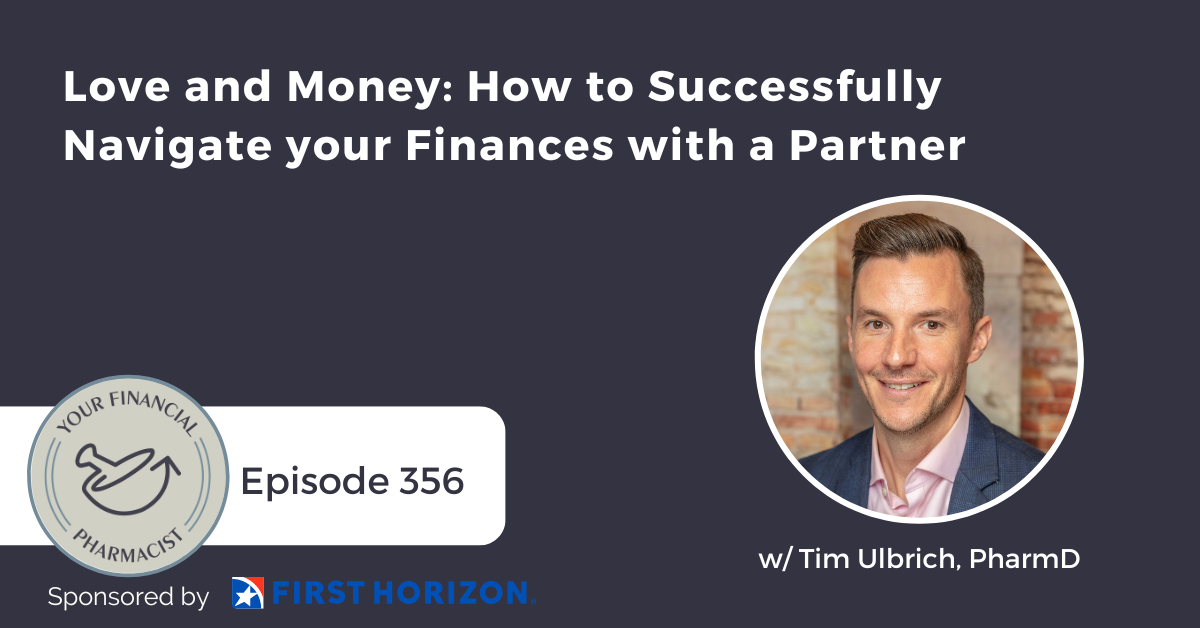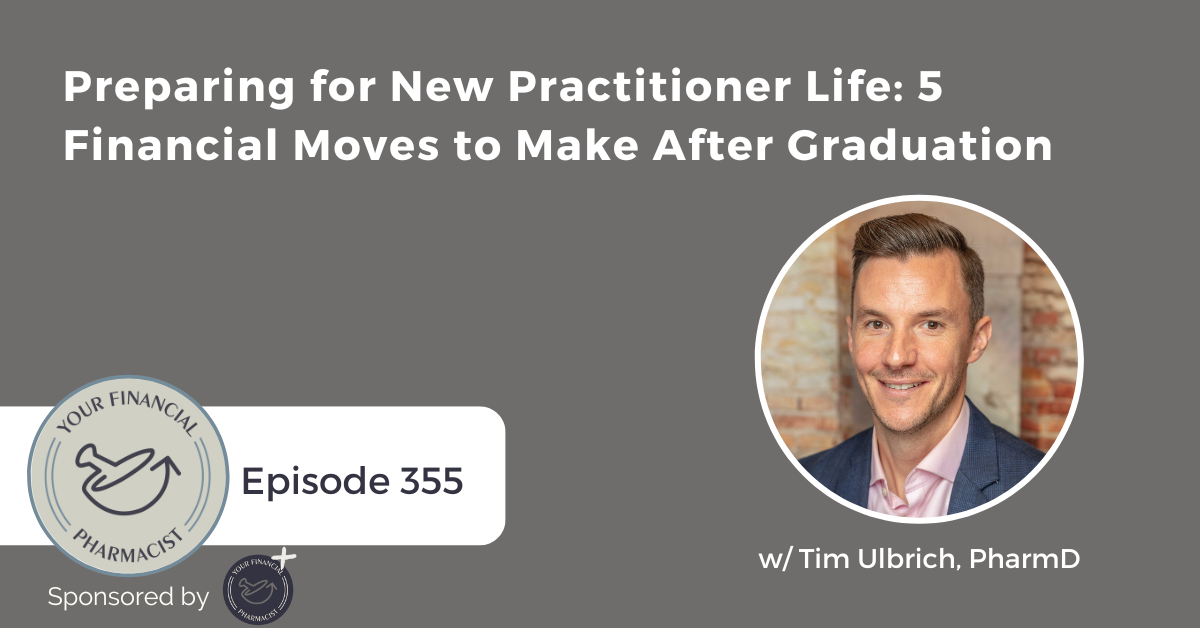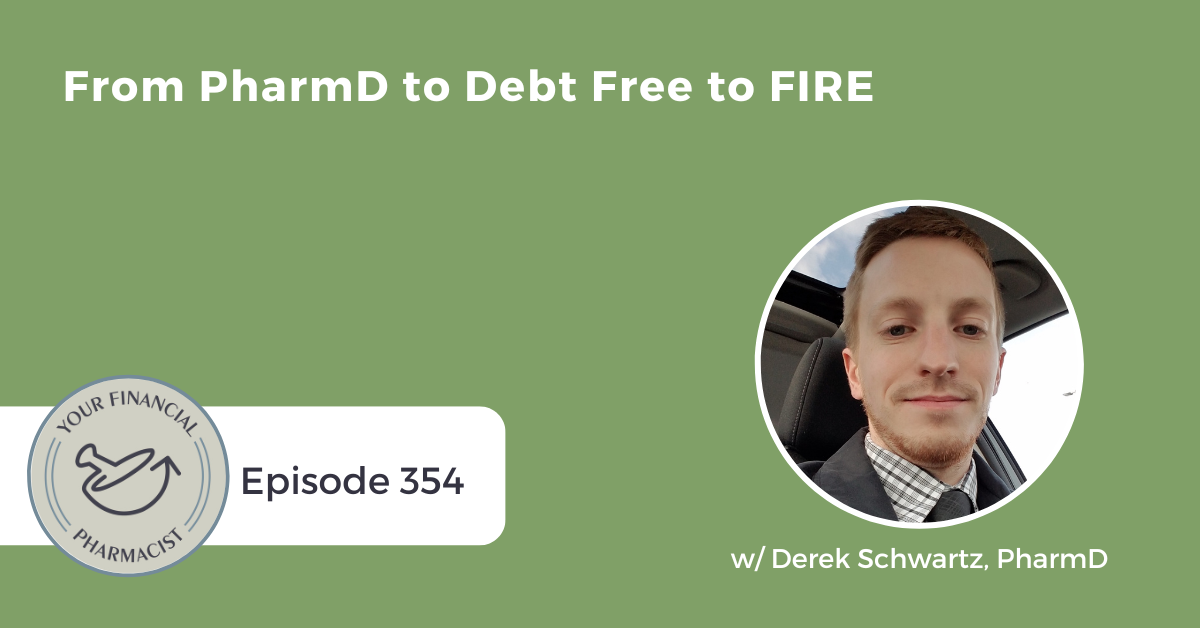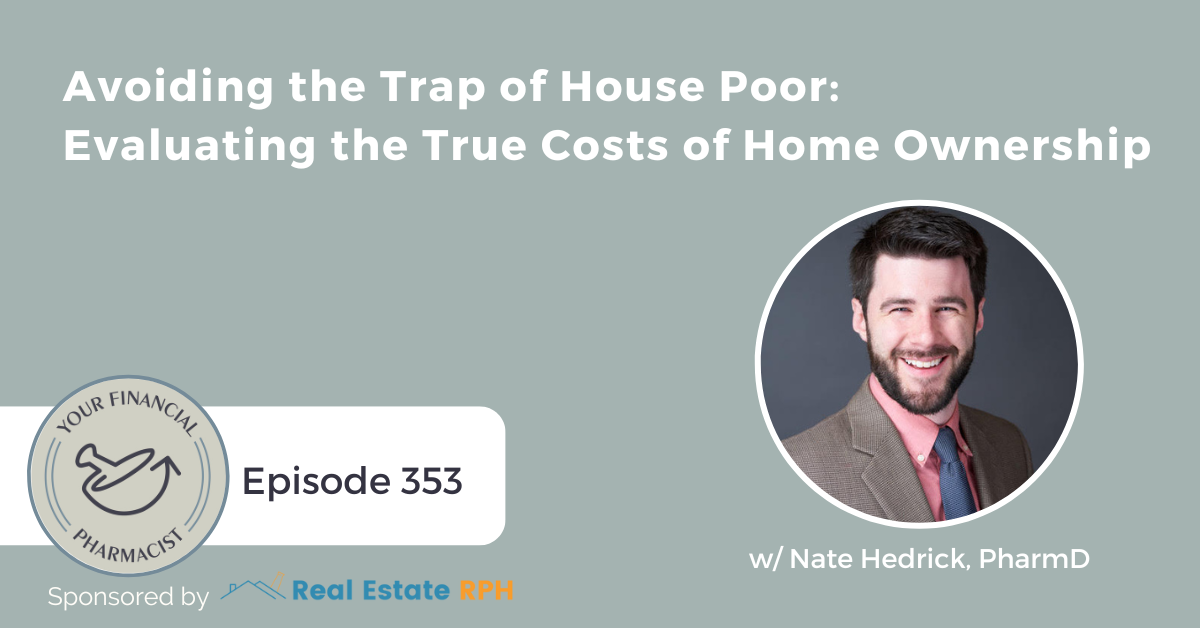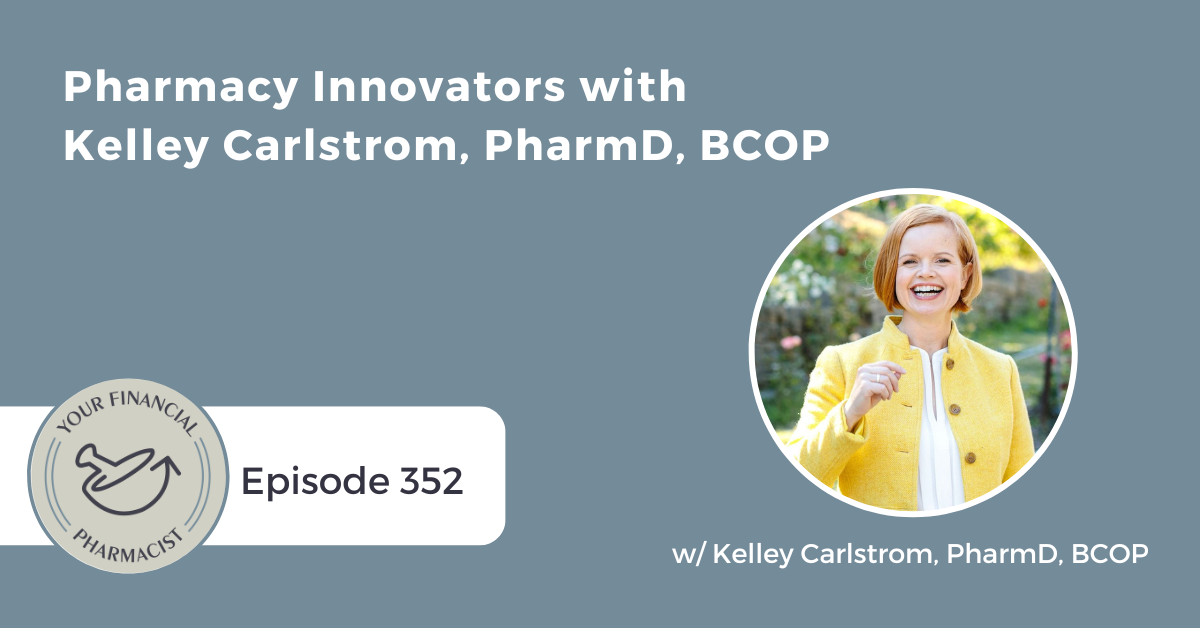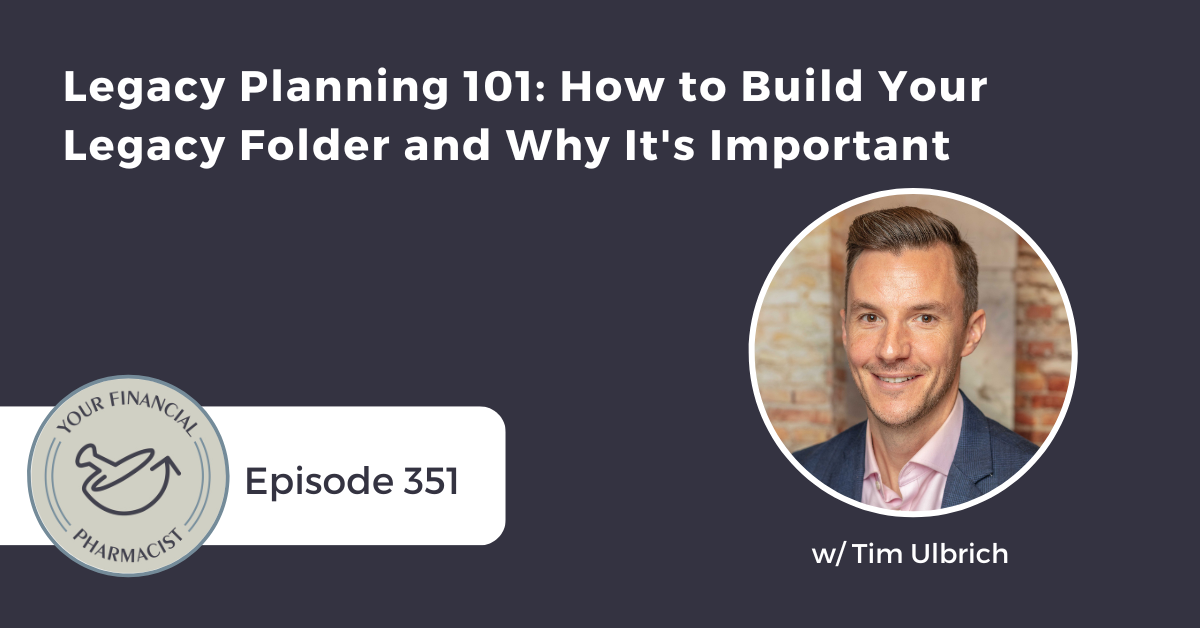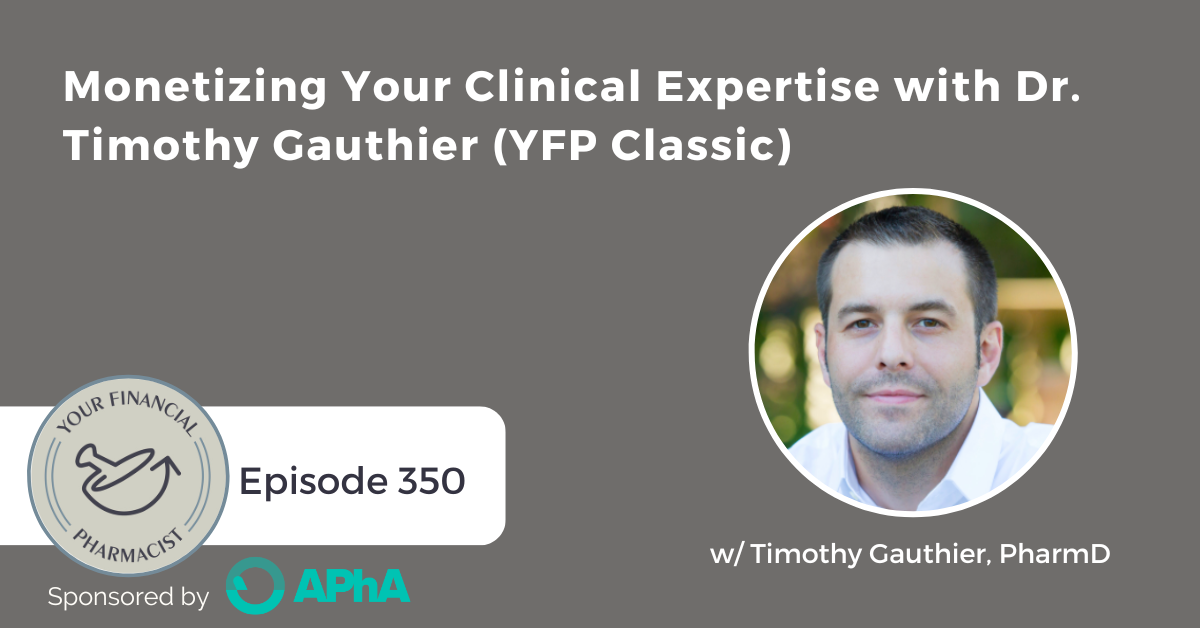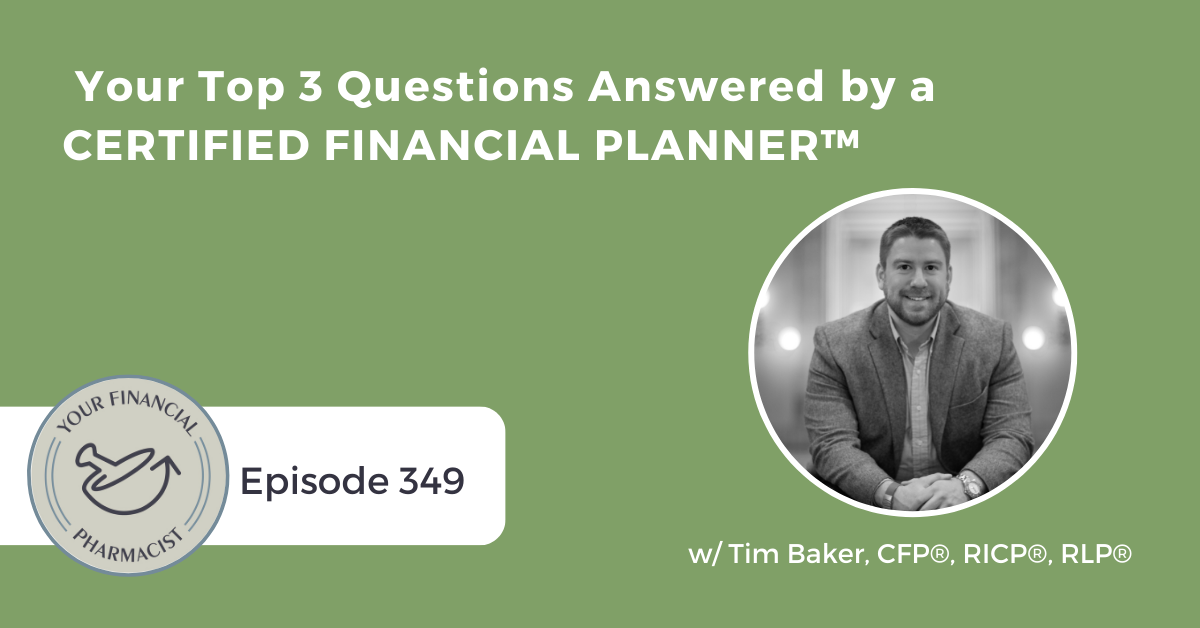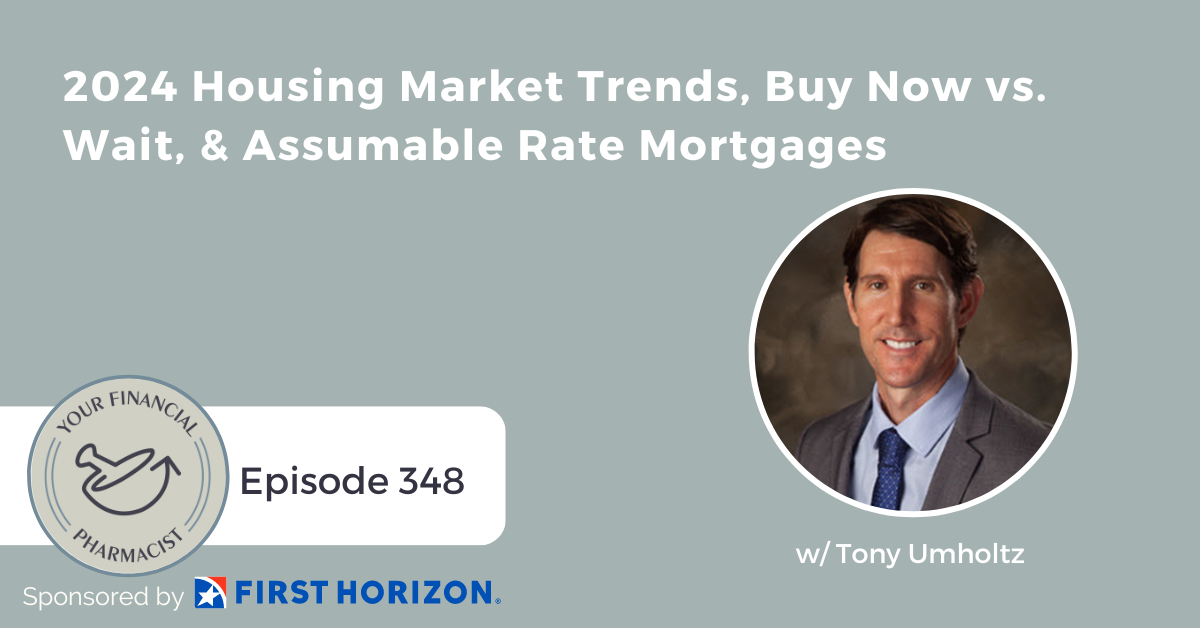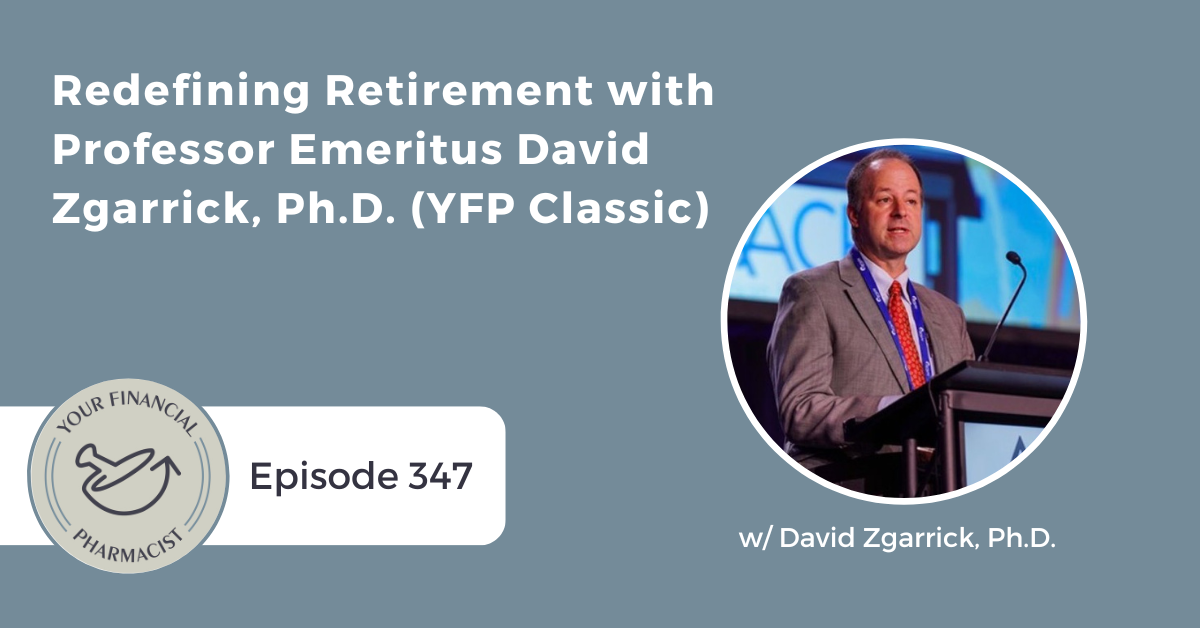Tim Ulbrich, PharmD (YFP Co-Founder & CEO) digs into how to successfully navigate finances with your partner and shares 25 questions you can use to frame conversations around money.
This episode is brought to you by First Horizon.
Episode Summary
On this episode, we’re talking about love and money! Discussing finances with your spouse, partner or significant other can be tricky sometimes. Tim Ulbrich shares 25 financial discussion questions to help you navigate these important conversations along with a free resource you can download to help get you started. From reflecting on your “money classroom” and the way you were raised to understand money to how you feel about debt, savings, and other important goals, Tim guides you through these important conversations. There is no one-size-fits all to managing finances in a relationship – but sharing the same vision and goals with your partner can set you up for success. This episode is brought to you by First Horizon.
About Today’s Guest
Tim Ulbrich is the Co-Founder and CEO of Your Financial Pharmacist. Founded in 2015, YFP is a fee-only financial planning firm and connects with the YFP community of 15,000+ pharmacy professionals via the Your Financial Pharmacist Podcast podcast, blog, website resources and speaking engagements. To date, YFP has partnered with 75+ organizations to provide personal finance education.
Tim received his Doctor of Pharmacy degree from Ohio Northern University and completed postgraduate residency training at The Ohio State University. He spent 9 years on faculty at Northeast Ohio Medical University prior to joining Ohio State University College of Pharmacy in 2019 as Clinical Professor and Director of the Master’s in Health-System Pharmacy Administration Program.
Tim is the host of the Your Financial Pharmacist Podcast which has more than 1 million downloads. Tim is also the co-author of Seven Figure Pharmacist: How to Maximize Your Income, Eliminate Debt and Create Wealth. Tim has presented to over 200 pharmacy associations, colleges, and groups on various personal finance topics including debt management, investing, retirement planning, and financial well-being.
Key Points from the Episode
- Navigating finances with a partner, identifying money personalities, and setting goals. [0:00]
- Financial planning for pharmacists, merging money personalities in relationships. [1:49]
- Money personalities and setting financial goals. [5:50]
- Financial goals, budgeting, and spending plan for couples. [10:39]
- Financial goals, debt management, housing, transportation, and children’s education. [14:57]
- Financial planning with a partner, including goals, investing, and retirement planning. [20:04]
- Financial planning and management strategies for couples. [24:32]
Episode Highlights
“I think it’s really important that we spend time to reflect on and identify our money personality and how this does or does not match with our partner. For some of you that have been at this topic for a while, you know how emotional and how behavioral this whole topic of managing money can be. And so it’s important we spend time to reflect on and to get curious about what our money approach is.” – Tim Ulbrich [4:13]
“It’s really helpful that we reflect upon what is the approach that we have surrounding money? How might that have been influenced by the money classroom that we grew up in? The more we can understand that about ourselves, as well as our partner, and how we bring those characteristics into the relationship can be really helpful as we set a plan going forward.” – Tim Ulbrich [8:03]
“Is everything merged when it comes to the finances? Might we have some things separate? Some things merged? Of course, that’s an individual decision for everyone. But ultimately, on some level, we want to have a shared vision, even if some of those items might be separate.” – Tim Ulbrich [8:38]
Links Mentioned in Today’s Episode
- Money Couple Money Personality Assessment
- 25 Financial Discussions for Partners
- I Will Teach You to Be Rich by Ramit Sethi
- Learn more about YFP Planning
- First Horizon Pharmacist Home Loan
- YFP+
- YFP Planning
- Subscribe to the YFP Newsletter
- Tim Ulbrich on LinkedIn
- YFP on Instagram
- YFP Facebook Group
- YFP Disclaimer
Episode Transcript
Tim Ulbrich 00:00
Hey everybody Tim Ulbrich and thank you for listening to the YFP Podcast where each week we strive to inspire and encourage you on your path towards achieving financial freedom. This week we’re talking love and money how to successfully navigate your finances with a significant other spouse or partner. Easier said than done right? During the show, I discuss how to identify with your money personality and how this does or does not match with your partner strategies for setting and achieving goals together 25 financial questions and discussions that every couple should have? Hang with me. I’ll give you a resource and a link to download those questions and advice from the YFP community on what has and has not worked for them in their own journey, navigating this important topic with their partner.
Tim Ulbrich 00:45
Now before we jump into this week’s episode, I have a hard truth for you to hear. Making a six figure income is not a financial plan. Yes, you’ve worked hard to get where you are today. Yes, you’re earning a good income. But have you ever wondered, Am I on track to retire? How do I prioritize and fund all these competing financial goals that I have? How do I plan financially for big upcoming life events and changes such as moving, having a baby, changing jobs, getting married or retiring? And perhaps why am I not as far along financially at this point in my career as I thought I would be? Well, maybe the answer is that your six figure income is not a financial plan. As a pharmacist, you have an incredible tool in your toolbox: that’s your salary. But without a vision and a plan that it good income will only go so far. That’s why we started Your Financial Pharmacist where YFP we support pharmacists at every stage of their careers to take control their finances, reach their financial goals, and build wealth through comprehensive fee only financial planning and tax planning. Our team of certified financial planners works with pharmacists all across the United States and helps our clients set their future selves up for success while living a rich life today. If you’re ready to see how YFP can support you on your financial journey, you can learn more by visiting your financial pharmacist.com/learn again, that’s your financial pharmacist.com/learn. Alright, let’s hear from today’s sponsor First Horizon and then we’ll jump into the show.
Tim Ulbrich 02:16
Does saving 20% for a down payment on a home feel like an uphill battle? It’s no secret that pharmacists have a lot of competing financial priorities, including high student loan debt, meaning that saving 20% for a down payment on a home may take years. For several years now we’ve been partnering First Horizon who offers a professional home loan option AKA a doctor or pharmacist loan that requires a 3% downpayment for a single family home or townhome for first time homebuyers, has no PMI and offers a 30-year fixed rate mortgage on home loans up to $766,550 in most areas. The pharmacists home loan is available in all states except Alaska and Hawaii, and can be used to purchase condos as well. However, rates may be higher and a condo review has to be completed. To check out the requirements for First Horizon’s pharmacist home loan and to start the pre-approval process, visit yourfinancialpharmacist.com /home-loan. Again, that’s yourfinancialpharmacist.com/home-loan.
Tim Ulbrich 03:20
Hi there, Tim Ulbrich here flying solo this week as we talk about love and money: how to successfully navigate your finances with a partner. Now first things first, this is a heavy topic right? And I do not have all the answers. When it comes to our financial plan for Jess and I we have found the system- keyword system -that works best for us. But we are far from perfect. We’ve made our fair share of mistakes. We haven’t always been on the same page. And it certainly has required compromise and grace on both sides. So this is not a preach and teach episode. That would be very helpful. Rather, the intent is to give you some things to think about and conversation starters, to find the system that works best for you. Because at the end of the day, that’s going to be what matters most.
Now, before we jump into some of the tactical strategies, and some of the questions and conversation starters, I think it’s really important that we spend time to reflect on and identify our money personality and how this does or perhaps does not match with our partner. Right for some of you that have been at this topic for a while, you know how emotional and how behavioral this whole topic of managing money can be. And so it’s important we spend time to reflect on and to get curious about what is our money approach? What is our money, personality? What is our money classroom that we grew up in the household that we grow up in financially? And how does that perhaps shape how we manage our money today and ultimately how we merge two of those money personalities together as we try to work and get on the same page. So some questions to think about here as it relates to the money personality. Do you approach money in the same manner that you were raised? Have you reflected upon the money classroom that you grew up in? And maybe what worked and didn’t work? Was money in your household an open conversation? Was it a closed conversation? Was it stressful? Was it calm? What was the emotional tone surrounding money? Was there transparency around money? Or was it a taboo topic? What were the spending habits, what was said? And what were some of the unsaid lessons that you learned along the way? And how did all of this potentially contribute to the money personality and the habits that you employ today that you ultimately bring into your relationship? Right, good and bad. Probably true for all of us.
If you want some guidance on this, there’s a great resource, we’ll link to it in the show notes. The Money Couple has five different money personalities, they have a book and an assessment if you want to really dig in and go further on this topic. And they in that resource they referenced five money personalities, those five personalities are number one, the Security Seeker. Number two, is the Saver; number three is the Spender; number four is the Risk Taker; and number five is the Flyer. Now, anytime we do these assessments, right, we’re running a risk a little bit in terms of bucketing ourselves into one of these approaches, when often we may have a little bit of more than one of these. And that’s one of the things I like about this tool is they combine two of these, what they call a primary and a secondary to come up with your money profile. So for example, let’s say that you identify as a saver/security seeker. Okay, so just some quick definitions here a saver, pretty much their outlook is that as they share in their own resources, A penny saved is a penny earned. You make things happen by getting the best deal, right, you can often be someone that’s very thrifty. Characteristics of a saver would be someone who’s trustworthy organized with money, they also would have some real challenges potentially, including maybe obsessing over money, having a hard time letting go. And they would rarely spend compulsively, they really liked the plan. And they really liked that good deal. Now a Security Seeker, which here was the secondary personality, they have an outlook that better safe than sorry, right protection and security is the definition here. So these individuals make things happen by planning for the future. And they’re often very well prepared. So some defining characteristics here would be they can investigate things thoroughly do a lot of research challenges, of course, could be, you know, some of the potential and again, letting, letting go. And maybe finding that balance that we often talk about in the show of living the rich life along the way. Certainly also trustworthy with their finances, they want to make decisions by confirming that there’s a plan, right? So they’re not, they’re not gonna be very spontaneous, and they’re spending money like to have multiple options. This is just one example, one assessment. But it’s really helpful, again, that we get curious that we reflect upon what is the approach that we have surrounding money, how might that have been influenced by the money classroom that we grew up in, and the more we can understand that about ourselves, as well as our partner, and how we bring those characteristics into the relationship can be really helpful, as we then set a plan going forward.
Tim Ulbrich 08:27
So once we really think about some of those money, personalities, you know, I think it’s then that we want to really figure out how can we set and achieve goals together? Now we’re gonna get into a little bit about, you know, perhaps is it everything is merged when it comes to the finances? Might we have something separate? Some things merged, completely separate. Of course, that’s an individual decision for everyone. But ultimately, on some level, we want to have a shared vision, even if some of those items might be separate. And I think it’s so important, I’ve talked about this on the show before, that we start with the vision, and not necessarily start with the budget or the spending plan, right? Not start in the weeds, but really start on what is the dream that we have financially? What does success look like for us collectively as a unit? And can we agree upon that vision, that direction, that dream that we have for us financially, right? That’s a much, I say, easy but easier conversation than getting into the individual decisions. This is also the place where we really want to get all of those goals, all of those ideas out of our heads onto paper, we want to see what overlaps what doesn’t overlap. Obviously, there’s gonna be some compromise here along the way, but once we get them to be shifting from unsaid to said, right, so Jess can share her goals, I can share my goals, we can see what what is similar, what’s different, and then we can begin to start to compromise and prioritize those. That’s really where we can start to then begin to implement and execute on that vision. So for us, I’ve shared this before on the show, typically what we do is want once a year we’re looking at, hey, what does success look like for us over the next 12 months? Right? Keeping the bigger vision in mind? What does success look like for the next 12 months? And what are those things that we want to focus on spending? You know, so we’re looking at, hey, are we on track with savings goals for the future? And retirement planning? If not, what are some things that we want to surplus in the following year? What do some of the experiences look like for us in terms of vacations, home projects, things like that? What are the giving goals for the year right? These are the things that we need to begin to, again, get out of our heads onto paper so we can start to set a plan. Now, I think it’s really helpful here, especially if you have two individuals that are on completely different pages that this is really really where a third party can be very helpful. I know for Jess and I, our financial planner at YFP has been really helpful in getting us to have conversations not only together when we’re in the room with a financial planner, but also in between those meetings to make sure that this is an open conversation as we can possibly have. Now, I have some questions here that I think are good conversation starters. Right? I started the episode by saying this is not about telling you what you should do. This is really about helping to start conversations, stimulate some discussion so that you can figure out what the system is that works best for you. So I’ve organized these questions into different areas. And I have 25 of them, I’m just going to mention them briefly. And we have a one page resource that you can download for free that will have a list of these questions. You can go to yourfinancialpharmacist.com/25 – two five again, yourfinancialpharmacist.com/25.
Tim Ulbrich 11:43
Okay, so in the spirit of starting conversations, here are 25 financial discussions that I think are worth having. And let’s start with the first bucket, which is setting goals, budgeting and just the overall approach to managing the finances. So the first question is, have we discussed and agreed upon our short term, midterm and long term financial goals? Now you can define these differently, I think of short term goals is within the next 12 months, next year, mid-term, one to three years in long-term greater than three years. Obviously, you can determine the timeline that makes the most sense of you. And then furthermore, how can we best set, review and update these on a regular basis? So there’s that initial exercise, and then how often are we going to be reviewing these so that we can make sure we are able to implement those in the plan? Sounds simple, right. But everything starts with the vision and getting to some level of an agreement on the shared goals.
Second question here is have we developed and agreed upon monthly spending plan, budget, whatever you want to call it, that accounts for all of the income and all the expenses? And does this spending plan, budget, again, whatever you want to call it, does it represent and include the goals that we just worked through in the first question? Now, again, for some individuals, and I’ll share some data here in a little bit from our community, for some individuals, everything is merged. Some they have some separate, some is completely separate. So obviously, you have to work through this as it relates to how you treat the merging or lack thereof of the accounts. But do we have representation within our spending plan, approach, whatever that looks like lots of different ways to do that. So that the goals, there’s an actual plan to implement and achieve those goals.
Question number three, does one of us take more of the lead than the other when it comes to managing the finances? And if so, are both of us aware of our overall situation? How do we ultimately make sure that both parties are aware of the progress if one person is taking the lead. I have seen that that often, not always, often is the case where one person may take the lead. So if that’s the case, what’s the plan? What’s the strategy? What’s the structure so that both parties are aware of what’s going on? And the overall progress? Right, the overall situation?
Number four, I’ve alluded to this a couple times is the desire to merge all of our finances; to keep some separate, some merged; or to have everything completely separate. Now for Jess and I, we’ve made the decision that everything’s merged, I’m not here to tell you that you should do that, or that’s the only way. But really having that conversation of what’s best for us, is it all merge is a little bit of both, or is it everything that would be completely separate. Number five, do we need to check with one another before spending any money? If so, is it a certain amount? What’s the criteria for this? How do we determine this. Some, you know, couples might have a large purchase or something that would trigger hey, we need to have a discussion about this. So what are those criteria, if any exist when it comes to making some of those bigger purchases? So that’s the first group of questions around setting goals. budgeting and your overall approach.
Tim Ulbrich 15:01
The second group of questions is around debt management. Debt Management. So question number six here on our list of 25. is how much debt have we acquired thus far? Right? Do we know? Do we know the numbers? Is everyone aware of the debt that’s that’s accrued? And what will be our plan to pay off the debt? Do we both understand each other’s debt position and the feelings perhaps just as important, the feelings towards the debt? Right, for some people, I’ve talked about this on the show before for some people, there can be a significant aversion to debt? Others maybe that’s not the case. So if you have two individuals where you have opposite feelings on debt, that’s an important conversation to have. Are we treating this as our debt? Or is this separate debt? Right? When you think about things like credit card debt, student loans, car payments, or other things that especially may have been existing coming into the relationship. Number seven, again, on debt management, how comfortable are we with having debt? And I would encourage you to break this down further to different types of debt, right, including student loans, credit card, mortgages, car loans, etc. So not just a blanket debt good or bad, but how do we feel about different types of debt? And then final question on debt? Number eight on our list is do we view each other’s debt as our debt? Or is this your debt? Right? And how does that potentially approach how we pay that off? All right, third group of questions is around housing and transportation. So question nine on our list is how do we feel about renting property versus owning a home hot topic right now, given where the housing market is at, given where home prices are and where interest rates are at? And if we already own a home, are we okay with the current situation? Or is there potentially a desire to move? Right? Again, we want to get a lot of these questions and maybe things that we’re thinking about making sure we have an opportunity to discuss with one another. So if we don’t own a home already, how do we feel about renting versus owning a home? What’s that timeline? Like if we already own a home? Are we thinking we’re set? Or is there a potential or desire to move? Next question around housing transportation, number 10 on our list, if currently renting, and there’s a goal to own a home, do we agree on the location, on the purchase price, and the amount of downpayment that would be needed, right? That’s gonna have a big impact on the budget. And again, if things are separate, and not merge, how are we both contributing to that downpayment? And getting ready for that purchase? Number 11, as relates to transportation? Do we view our cars as a necessity? Is it a luxury where we lease? Are we gonna buy our cars? If we buy our cars? Are we paying them outright? Are we going to finance part of it? How do we view the transportation part of the plan? And again, let me pause here and reinforce what I was saying towards the beginning. I don’t really think there’s a right or wrong answer here. The goal is to really get you thinking about, hey, how do we feel individually? How do we feel collectively as a unit? You know, as I think about this question here on transportation, it reminds me of Ramit Sethi’s book, I Will Teach You To Be Rich. I’ve referenced that many times on the show before and one of the things he talks about he starts the book is this concept called Money Dials. And what he’s referring to there is identifying those things that derive the most significance and meaning for you as a part of the financial plan and have a plan to spend money, what he’s referring to is the dial, dial that up. And alternately for the things that you maybe don’t care as much about financially, dial that down, right. For some people, you know, transportation cars may be something that’s has significant value, and for other people, not so much.
Tim Ulbrich 18:35
Alright, next group of questions relates to kids, children. So number 12 on our list is how do we feel about one of the biggest expenses we often see in the financial plan – daycare? What’s our budget for this? And how does it fit in with other financial goals? Number 13, how do we feel about public versus private K through 12? education? You know, again, this might certainly link back to the home purchase and the location and and where you’re looking for home based on schools. And if it is private education is the goal, how will we plan for this and prioritize it with other financial goals? Number 14, again, in this area of children, how do we feel about paying for our kids college? This is a hot topic, right? You often see maybe people that are split on this. And how do we plan for this? Are we hoping to pay for it in its entirety? A partial amount? Are we banking on you know, scholarships or other funding other family to help taking on debt? What’s the plan for that? And then last question, as it relates to children, what ideas and strategies do we want to employ to teach our kids about managing money? Right? We started this episode talking about the money classroom we grew up in. And for those that have children in the home that you’re raising now, they’re obviously growing up in their own money classroom in your house. And so what strategies are we employing and how are we approaching teaching kids about money? What’s our philosophy about behind that, right. So this this gets to things like, you know, our philosophy around alarm allowances, and giving, and how we’re going to teach some of those lessons to our kids. And at what ages are they ready for those lessons?
All right, next group relates to saving, investing, and retirement planning. So question number 16, when it comes to the emergency fund, are we comfortable with three months? Right, your general rule of thumb recommendation three to six months of essential expenses? Are we comfortable with that? Three months, six months, something in between, something different? Have we discussed that? Again, are we on the same page with that?
Number 17, what financial goals are we trying to achieve by saving or investing? What does success look like, right? So we often talk about the importance of saving and investing for the future. But for what? What are we trying to achieve? And what does success look like? Number 18? What does retirement look like for both of us? Are there similarities? Are there differences? What’s the desired age? Right? What are the activities? What what are we working on? Which is the next question: what activities are we engaged in during retirement? What are we doing together? What are we doing separately? Right, beginning to envision so that we’re approaching that retirement phase with intentionality.
Next question, how much should we be saving and investing for retirement each month? And how do we balance and prioritizes with other goals? And then final question here on saving investing in retirement planning? What is our risk tolerance for investing? And again, if we have two different risk profiles? How are we approaching that as we’re saving, investing and planning for the future?
Final set of questions as a group, I’m just calling miscellaneous questions. Got four left on the list here. Number 22. How does each of us feel about giving? How much? How often?Where? How will we plan for this? And what priority? Are there certain things that we have to have achieved before we do this or not? Number 23: Do we plan to do the financial plan ourselves? Or are we looking to hire a professional to assist? Are we on the same page about this? If the goal is to hire someone, what are the criteria we’re going to use that will help us find the right fit? Who’s taking the lead in this conversation? What does that look like for us as a unit? When it comes to assisting family financially, whether that be caring for elderly parents, maybe that’s supporting a family member need or some other situation, how do we feel about this? Right? How do we feel about this financially, and the impact that it can have in other parts of our financial plan? And then finally, question number 25? How will we strike that balance between saving for the future and living a rich life today? What does it mean to us to be living that rich life today? And how are we prioritizing that in the financial plan?
So again, that’s 25 conversation starters, there’s a lot there, right, the different categories we talked about, you can download that list again, yourfinancialpharmacist.com/25. I hope you’ll reference that maybe print it off, and have some of those discussions with your partner. Next, I want to give some input not just from me, but from the YFP community on what has and has not worked for them in their own journey of navigate navigating this topic with their partner.
So I recently posted a poll on LinkedIn asking the following question, that for those that are working with a significant other spouse or partner on their finances, which of the following best describes your situation: is everything merged or all the finances merged? Are some things merged something separate? Or is nothing merged? In essence, everything is separate. And what we saw from that data was just shy of 50%- 49% responded that all of the finances were merged. 42% responded that some were merged and some are separate. And 10% responded that nothing was merged, and that everything was separate in their accounts. Now, some of the comments and advice that I thought were helpful to pass on and again, some some different perspectives here. Kelly had this to say lots of systems can work. But it all starts with transparency. It’s not uncommon for one person in the household to do the bill pay, and thus see more of the transactions. Periodic money dates can help facilitate conversation. A favorite topic in our house is identifying mutual goals and where we want to prioritize funding for the year, sometimes their goals are not aligned. And that is important conversation, as well. So Kelly, comes transparency. Having that open conversation having those periodic money does it dates and sometimes those goals aren’t aligned, and important conversation to get on the same page. Tracy said that we have a joint household account, where we contribute an equal amount each month to cover our household expenses, and some minor rainy day savings. We tossed around percentage based on income but landed on equal flat dollar amount. We also have separate personal spending accounts for ourselves, so we don’t feel like we have to justify personal spending to one another. We’ve divvied up who contributes and covers what to each savings bucket and who does the insurance via their paycheck all this to say after typing this that our marriage is basically a business. I thought that was some humor to add in there as well. Cassidy said my husband, I follow the 50-30-20 budgeting process right now. We have a joint account where 50% of our income goes towards household expenses and joint purchases, a joint high yield savings where we both contribute 20% of our paycheck for larger goals. And then 30% goes in our fun money personal checking accounts. So far it’s working great ensures that we’re both contributing an equitable portion of our income.
Final one that came in is someone shared just got married in summer of 2023. My husband wanted to keep our finances separate, except for one joint checking to pay utilities out of. This came from seeing his parents get divorced about six years ago and had always fought about money. He did not want that to be us. So going into the marriage, we plan to keep our own savings. I that’s a great example before I go further with this one of how that upbringing, right, how that money classroom can impact how we approach our money today. She goes on to say that we’re now nine months married, and we’re getting ready to buy a house with the need to pay the mortgage, we’re rethinking finances and will likely be combining more of our money. He prefers a separate checking account for each item, such as utilities and mortgage, we still plan to keep the money we had pre-marriage as our own stock savings, mutual funds, etc. We have a joint credit card for joint expenses and groceries that’s worked well. We still have separate credit cards. Being upfront about money has been so important to us. We’ve had several long conversations about money, pre-marriage, and within the last few months to get us set up for success. So it sounds like here, there’s even some transition, as they’re getting ready to purchase a home. They’ve been married now just shy of a year, maybe perhaps more that’s moving into the joint accounts, but a system that they’re still working through.
So I appreciate all of those that contributed providing different ideas. So again, the spirit of this right is to identify that system that works best for you. Right works best for you and your partner, really accounting where we started with reflecting on and getting curious about what is the money mindset? What’s the money personality approach that I have? And do I have a good understanding of that for me, as well as my partner? Really coming up then with those shared goals? That vision we talked about? What does success look like in the short, mid and long term, and then beginning to work through those individual areas of the financial plan.
Tim Ulbrich 27:19
Well, certainly last but not least, as many of you know, we have a team of Certified Financial Planners at Your Financial Pharmacist that we offer fee-only financial planning and tax planning, we work with pharmacists all across the country. And certainly we’d love to have the opportunity to work with you. And we’d love to have an opportunity to talk more to see whether or not the services are a good fit. You can learn more about our fee-only financial planning services again at yourfinancialpharmacist.com/learn. Again, that’s your financial pharmacist.com/learn. I think, as I mentioned a couple times that third party, right, that third party can be so helpful to facilitate some of these conversations and to begin to execute on the different aspects of the financial plan. Well, thanks so much for listening, and have a great rest of your week.
Tim Ulbrich 28:05
Before we wrap up today’s show, I want to again, thank this week’s sponsor of the Your Financial Pharmacist Podcast, First Horizon. We’re glad to have found a solution for pharmacists that are unable to save 20% for a down payment on a home. A lot of pharmacists and the YFP community have taken advantage of First Horizon’s pharmacist home loan, which requires a 3% downpayment for a single family home or townhome for first time homebuyers and has no PMI on a 30 year fixed rate mortgage. To learn more about the requirements for First Horizon’s pharmacist home loan, and to get started with the pre approval process, you can visit yourfinancialpharmacist.com/home-loan. Again, that’s yourfinancialpharmacist.com/home-loan.
Tim Ulbrich 28:51
As we conclude this week’s podcast and important reminder that the content on this show is provided you for informational purposes only and is not intended to provide and should not be relied on for investment or any other advice. Information to the podcast and corresponding material should not be construed as a solicitation or offer to buy or sell any investment or related financial products. We urge listeners to consult with a financial advisor with respect to any investment. Furthermore, the information contained in our archive newsletters, blog posts and podcasts is not updated and may not be accurate at the time you listen to it on the podcast. Opinions and analyses expressed herein are solely those of Your Financial Pharmacist unless otherwise noted and constitute judgments as of the dates published. Such information may contain forward looking statements, which are not intended to be guarantees of future events. Actual results could differ materially from those anticipated in the forward looking statements. For more information, please visit yourfinancialpharmacist.com/disclaimer. Thank you again for your support of the Your Financial Pharmacist Podcast. Have a great rest of your week.
[END]
Current Student Loan Refinance Offers
Note: Referral fees from affiliate links in this table are sent to the non-profit YFP Gives. | Bonus | Starting Rates | About | YFP Gives accepts advertising compensation from companies that appear on this site, which impacts the location and order in which brands (and/or their products) are presented, and also impacts the score that is assigned to it. Company lists on this page DO NOT imply endorsement. We do not feature all providers on the market. |
$750* Loans ≥150K = $750* ≥50K-150k = $300 | Fixed: 4.89%+ APR (with autopay) | A marketplace that compares multiple lenders that are credit unions and local banks | ||
$500* Loans ≥50K = $500 | Variable: 4.99%+ (with autopay)* Fixed: 4.96%+ (with autopay)** Read rates and terms at SplashFinancial.com | Splash is a marketplace with loans available from an exclusive network of credit unions and banks as well as U-Fi, Laurenl Road, and PenFed |
Recent Posts
[pt_view id=”f651872qnv”]

